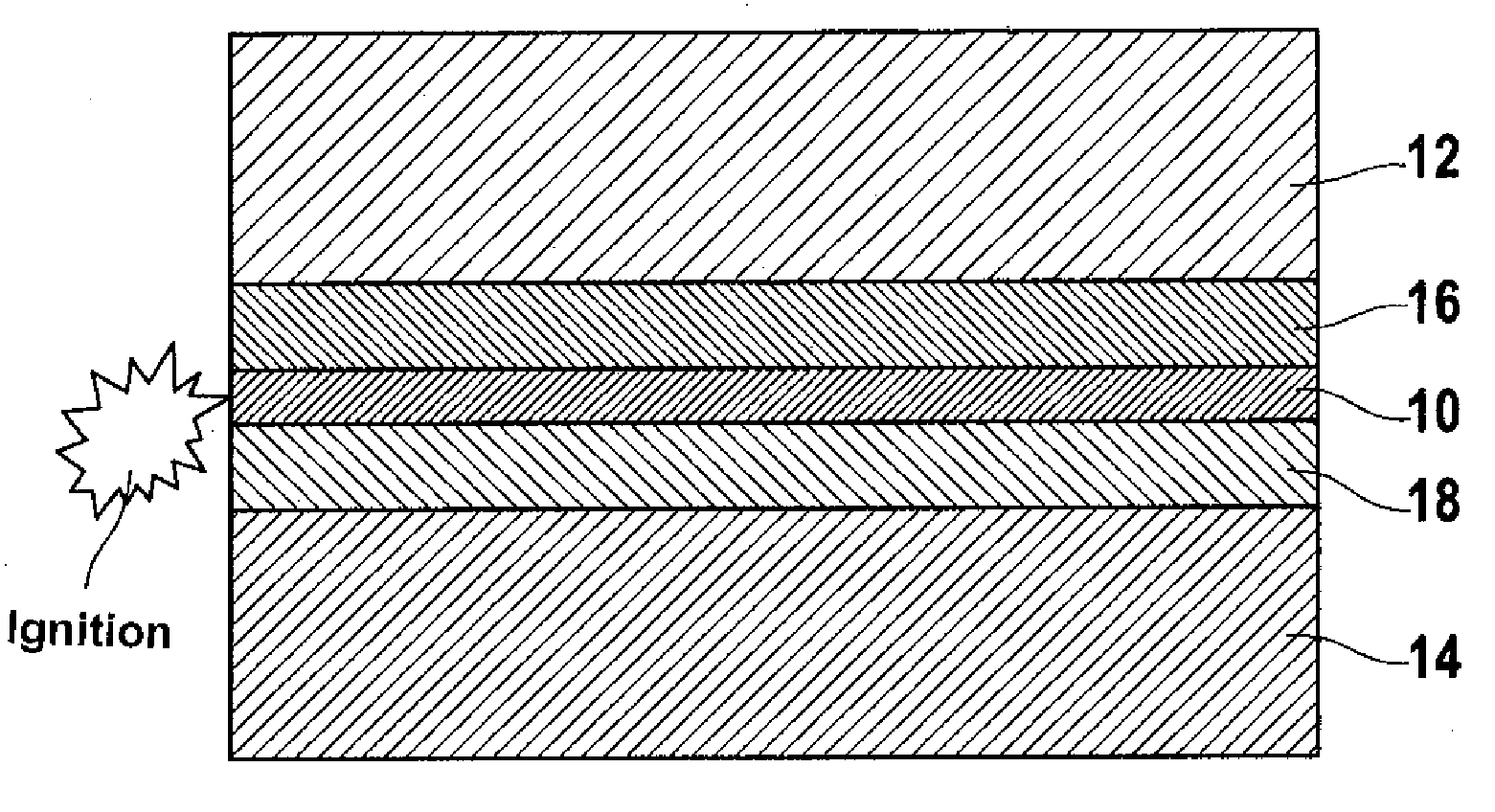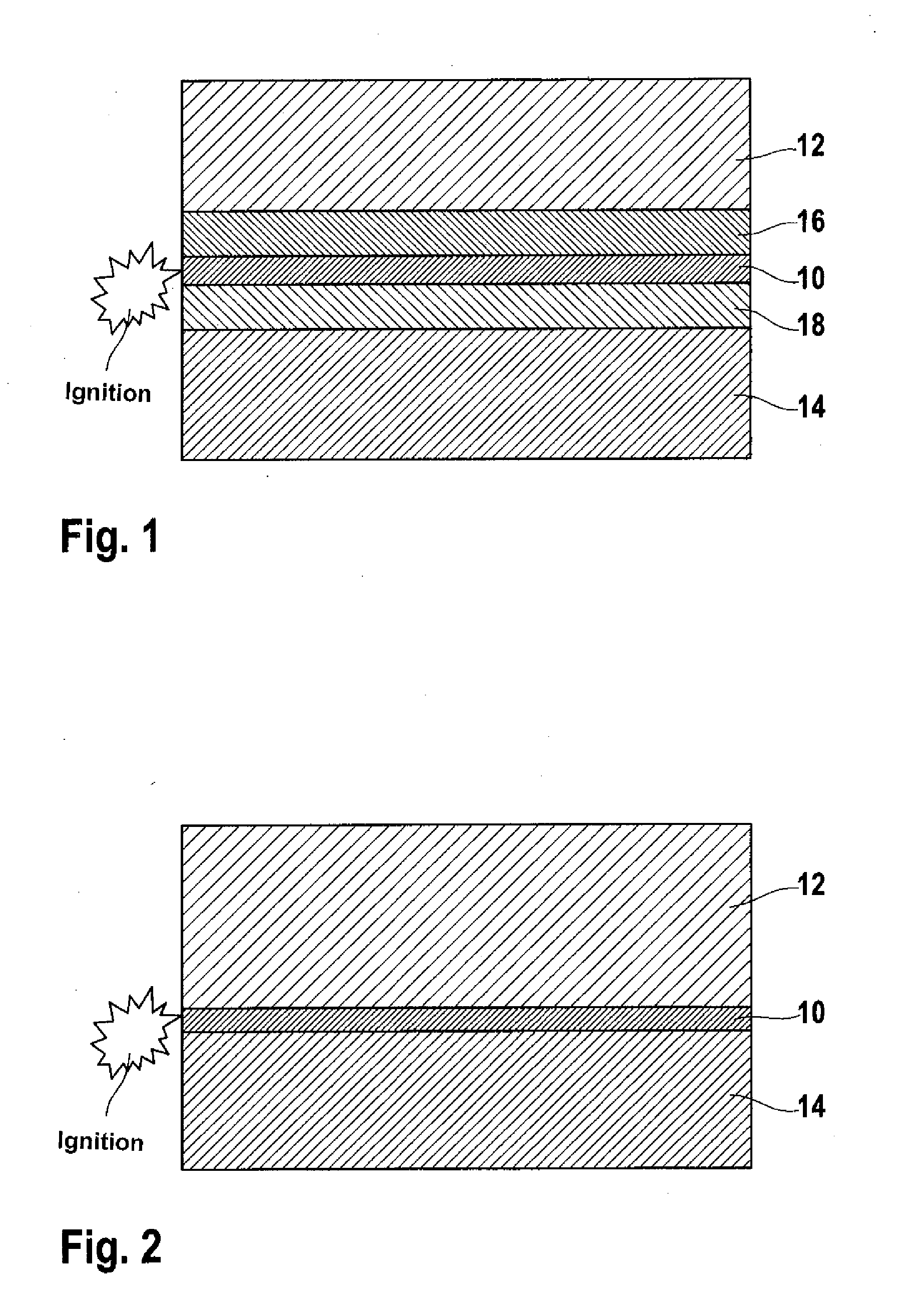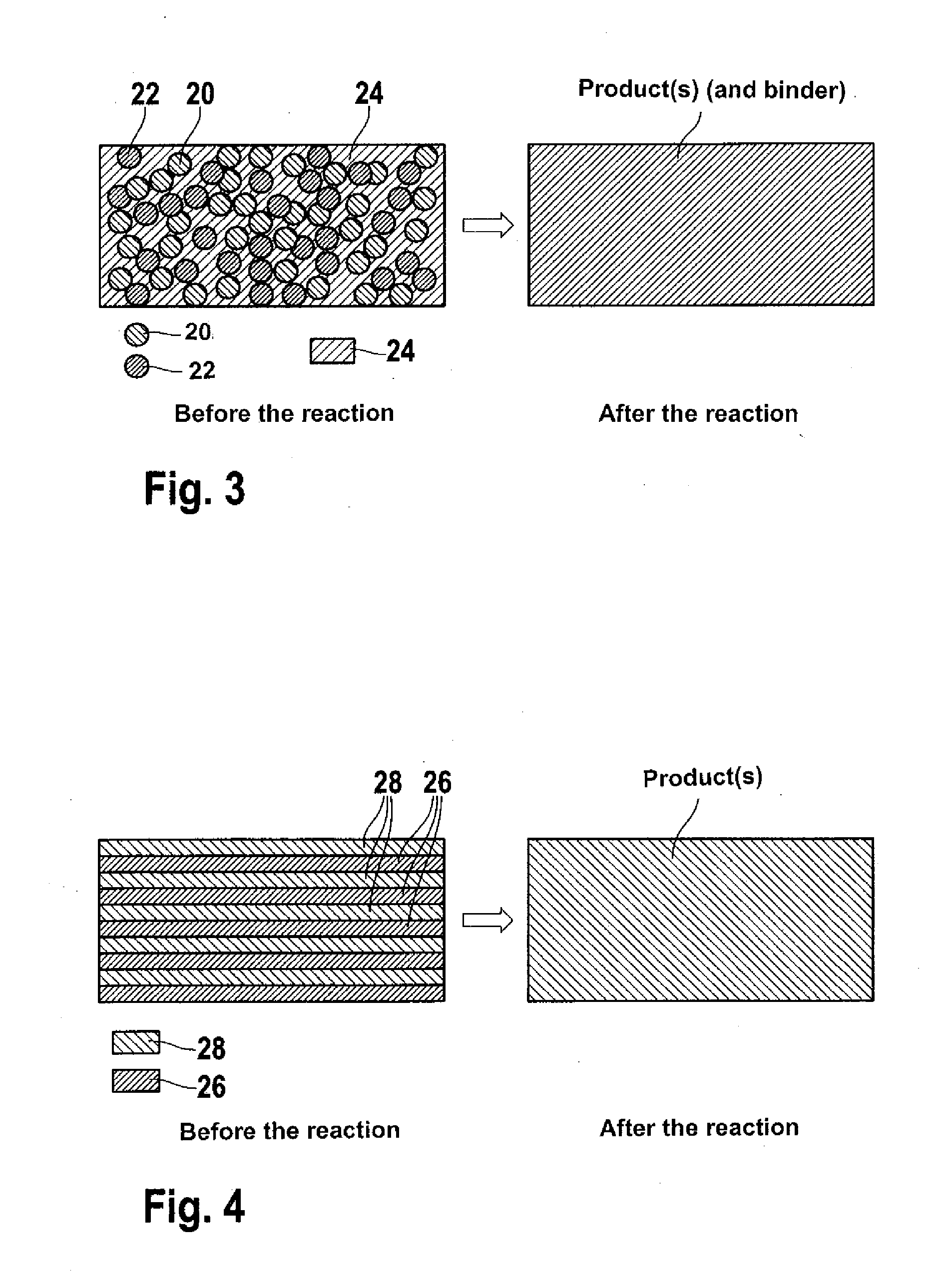Joining Method For Joining Components
a technology of joining components and components, applied in the direction of welding/cutting media/materials, manufacturing tools, welding apparatus, etc., can solve the problems of high apparative expenditure, high time need for joint production, and inability to meet the needs of weight optimization, etc., to achieve the effect of connecting materials
- Summary
- Abstract
- Description
- Claims
- Application Information
AI Technical Summary
Benefits of technology
Problems solved by technology
Method used
Image
Examples
second embodiment
[0049]The nano- or microstructured materials 10 of the first and the method according to the present invention consist of reactants 20, 22 which react with each other in a self-propagating, exothermic chemical reaction if activation energy is introduced. For example the nano- or microstructured materials 10 can be metallic educts as for instance aluminium or titanium, which react to an intermetallic phase, in this case TiAl, Ti3Al or TiAl3, et cetera. These are only examples for a multitude of nano- or microstructured materials 10. Optionally also nickel, antimony and niobium as well as other metals can be used for instance.
[0050]The enumeration is here not restrictive. For an average person skilled in the art it is apparent that there is a multitude of further nano- or microstructured materials.
[0051]Thereby the self-propagating exothermic reaction does not have gaseous educts or products. Also a liquid phase is not possible on the product side though it is possible on the educt si...
first embodiment
[0058]The particle size of the reactants 20, 22 lies in the nanometer or micrometer range and is connected by a binder 24 in this example, the joint material is for instance in form of a paste. The binder 24 can be solid as well as liquid and serves at first to make the paste manageable for the joining process. The reactants 20, 22 can be arranged within the binder 24 in any possible distribution which ensures the self-propagation of the chemical reaction. As shown in FIG. 3 two reactants 20, 22 or arbitrarily many reactants can be used, depending on the function and on the intended use. The binder 24 can but does not have to be involved in the self-propagating chemical reaction. The binder 24 can but does not have to be used as connecting material for the joint as described in the method according to the present invention.
[0059]FIG. 4 shows another possible arrangement of the reactants 20, 22 in the nano- or microstructured material. It is shown schematically the state before and a...
PUM
| Property | Measurement | Unit |
|---|---|---|
| Thickness | aaaaa | aaaaa |
| Concentration | aaaaa | aaaaa |
| Microstructure | aaaaa | aaaaa |
Abstract
Description
Claims
Application Information
 Login to View More
Login to View More - R&D
- Intellectual Property
- Life Sciences
- Materials
- Tech Scout
- Unparalleled Data Quality
- Higher Quality Content
- 60% Fewer Hallucinations
Browse by: Latest US Patents, China's latest patents, Technical Efficacy Thesaurus, Application Domain, Technology Topic, Popular Technical Reports.
© 2025 PatSnap. All rights reserved.Legal|Privacy policy|Modern Slavery Act Transparency Statement|Sitemap|About US| Contact US: help@patsnap.com



